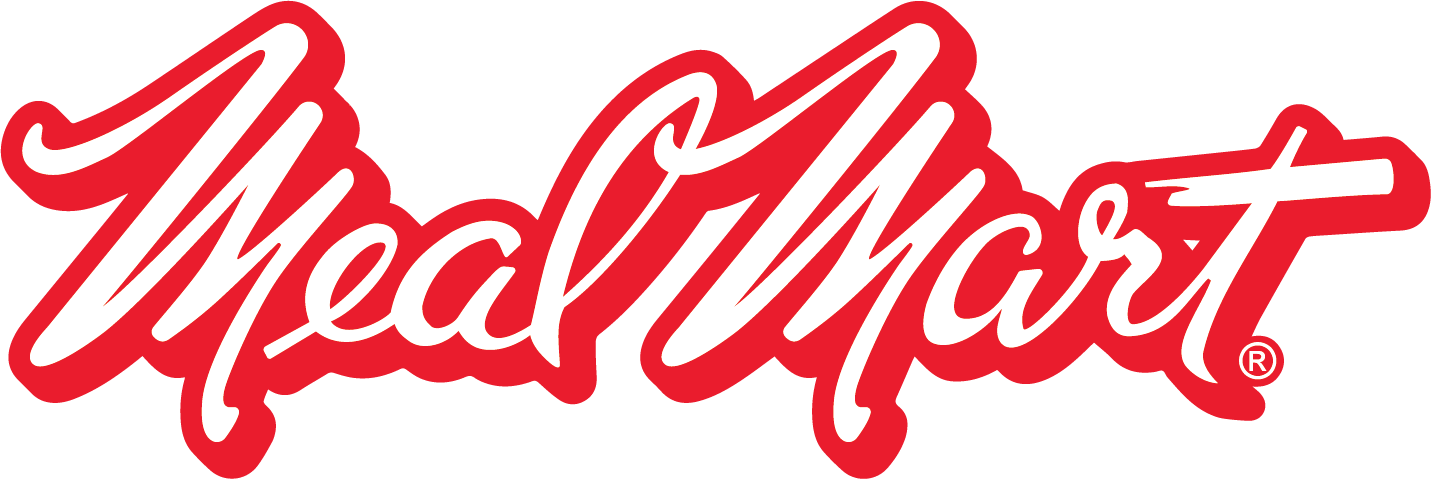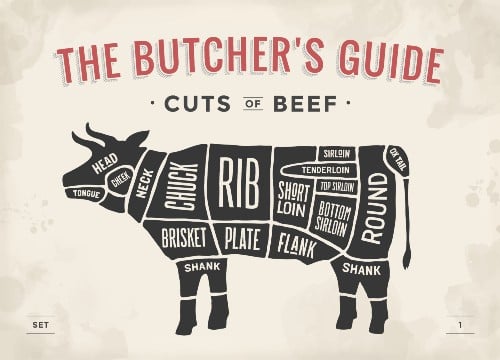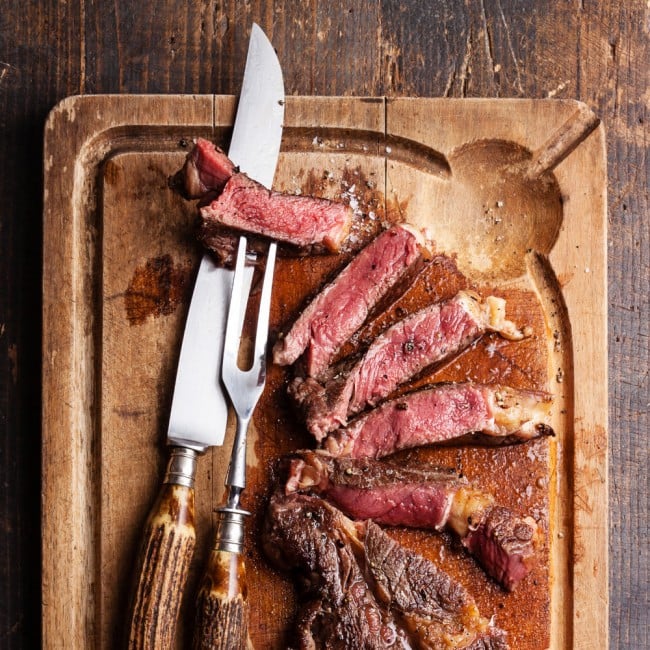Sponsored by 
Is there anything more baffling than walking over to your local meat counter, and staring down at the seemingly endless line of cuts, roasts, and steaks, while trying to figure out which one to bring home? After all, not all meat is created equal, and choosing via “eeny, meeny, miny, moe” method isn’t exactly scientific. So how exactly do you go about finding the perfect piece of meat for your meal plan?
To get the best answer, we contacted the experts, our friends over at Meal Mart, kosher meat kings since forever. Well, more precisely, since 1945. They broke it down for us into easy to chew pieces, so we could pass it on to you. Prepare to be a savvy, informed consumer of all things cow.
Here, take a look at this cow. The location of the cuts is extremely important, it tells us about the muscles, fibers, and fats that we can expect; as those will guide us in our selection and cooking process.

You’ll recognize some of your favorite cuts, and wonder where some of your others have gone. Hang on, because we’re gonna get technical. (Just a head’s up, the back-half of the cow is not processed or used by any Glatt Kosher company, due to halachic complications).
Here’s a useful tip. The less worked-out a particular cut is, the less muscle it will have. The less muscle it has, the more tender it will be.
Cuts
- The Rib
You’ve had ribeye steak before, sometimes on the bone, sometimes off. But have you ever served it as a full standing ribeye roast? It’s a real show stopper. It’s well-marbled with just the right amount of fat, which adds a lot of natural juiciness and flavor. It does well with dry-heat cooking. - Chuck
Chuck is the bread and butter of the butcher business, it’s almost 30% of the cow by volume. Extremely versatile, it gets separated into 2 subprimal cuts. Chuck, which we’ll discuss now, and the shoulder which we will discuss later with the foreshank.We start with the French roast; since it’s close to the rib, it has beautiful balanced fat content, perfect for a crowd that has a variety of palates.
Next is the chuck eye, widely considered a more affordable ribeye, it’s a versatile piece of meat that can be cooked any way you like. The end of the chuck touches the ribs, and that is where the juicy Delmonico steak comes from.
- Brisket
This section of our cow sits under the chuck and supports the entire upper half the animal, almost 60% of the entire weight of the cow. It consists of two different parts. The first cut on the bottom is leaner and is great for slow cooking. The top of the brisket, which is called the second cut, has a much higher fat content, making it a great piece of meat for braising.Interestingly, many people are now buying the whole brisket, as the connective tissues between the two parts melts down while smoking, leaving a delicious flavor. A favorite for smokehouses, because it allows fat content to melts away during smoking without allowing the meat to fall apart. Brisket, of course, is also great for making corn beef and pastrami.
- Foreshank
The foreshank is connected to the shoulder. Think of your arm from the top down to the elbow. It works well as a stock, lean chopped meat, or in a beef stew. It’s also where we get succulent marrow and gallah bones from. As we move upward, we find the silver tip roast, minute roast, and the premium flat iron steak. - Plate
This area is naturally fatty and flavorful. It does well with quick grilling, and it’s where we get delicious skirt steak and beef fry.
Grades
Meat is serious business. That’s why the USDA provides grades, so we can know what caliber cow we are consuming. Top marks are Prime Grade. This means the animal was well-fed, young, healthy, and well-marbleized. This is generally the higher end stuff that you’ll get served in steakhouses, or by special request from your butcher. The next step on the marking chart is Choice Grade, which is similarly high-quality but has less marbleized fat, making it somewhat less tender. Select Grade means the meat is leaner and less juicy. Check out the U.S. Department of Agriculture website if you’d like more info on this!
Cooking
This is the most important part, so remember this above all else—the tougher and leaner the meat, the more moisture it needs to soften. It’ll also require a covered, slower, lower-temperature cooking method, such as simmering or baking. Tender meats do well with dry-heat cooking, such as broiling, roasting, or grilling. And of course this requires a faster-paced timeframe. (Some people like to combine dry and moist cooking methods, introducing some of both to their cut).

Tips to Take Shopping
- Befriend the Butcher
He knows stuff. He’s a valuable resource. Pepper him with questions about cook time, meat thickness, dry or moist cooking, how to enhance flavor, etc. - Red Rocks
Red meat means the animal was younger, and the muscles less exercised. This doesn’t mean darker meats are spoiled or bad, but it could mean it’s been on the shelf longer, that it’s the product of an older cow, or that it’s a more exercised muscle of the animal, which, as we’ve said, will mean it’s less tender. - Best Cut, But Best for You?
Don’t just buy what the butcher tells you is the best cut. You want to find the cut that’s right for your meal, recipe, and goal. Talk out your plan with the man before being swept up by the best. - Fat is a Friend
In moderation. Look for meats that are well-marbleized, because they’ll give you the juiciest and most flavorful kick. Big chunks of fat are no fun. You want the spider-web type that works its way through the whole chunk. - Three Cheers for Cheap
Don’t be afraid to go cheaper. If you find a way to maximize a piece of meat, with cooking methods and sauces, even a lower-end, less fabulous piece of meat can be full of spice and pizzazz. Each piece of meat just needs the perfect puzzle-piece plan to bring it to excellence!





